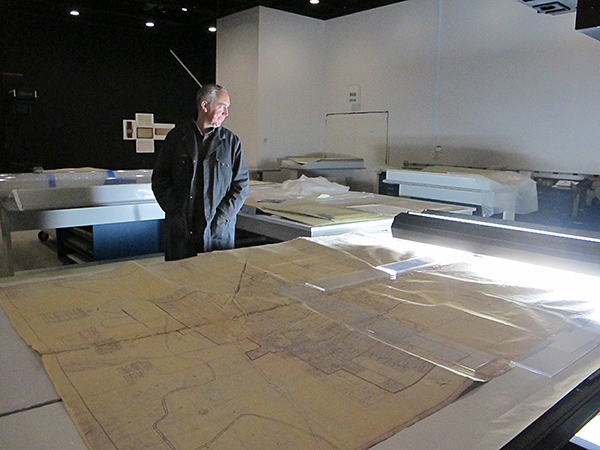
Reformatting Paper-Based Records
Consider creating a duplicate paper copy or digital version of inherently unstable or fragile records for access. Creating a facsimile captures the best image of a record that may continue to deteriorate, and preserves the original document, if it is retained.
- Discuss whether reformatting all potentially unstable records or those showing signs of deterioration is part of the holdings maintenance project. The stability and longevity of some formats and the papers used to produce them varies.
- If establishing a system where records will be copied by digitization, ensure that digital preservation guidance is followed; for example utilizing the Digital Preservation Guidance and Regulations.
- Highly acidic paper-based and potentially unstable archival records, such as newspaper clippings, mimeographs, telegrams, and some thermofaxes are candidates for preservation photocopying, or digitizing and then printing a copy, onto archival bond paper.
- Consider retaining the original if it is inherently significant or when the quality of the photocopy or digital copy is not high enough to stand in for the original. Discuss this with the project lead.
- An overhead imaging setup is the safest option for digitizing many traditional archival records. A fastened record can be imaged safely by gently rolling back top sheets, but without putting pressure on the record, which could cause a crease or other damage to the original.
- Autofeed equipment may be considered for one-sided, single sheets of modern records that are in good condition and of the same size and similar paper type and thickness. Acidic, brittle, torn, and otherwise compromised records should not be sent through autofeed equipment. Note that some high-end autofeed scanners can digitize double sided records safely.
- Always support the record over its entirety. Using a copier or scanner bed smaller than the record risks creasing or tearing it.
- It is generally safer to remove fasteners when using a photocopier or flatbed scanner. If a fastener is not removed, do not close the lid or add pressure that will crease the record. Use a finger to maintain a gentle curve in the sheet folded back for imaging.
- Reformatting oversize records requires equipment large enough to support and capture the entire record. This necessitates both a larger support area and a significantly longer focal height than those used for letter and legal sized records. For very large records, it may be necessary to take multiple images that are combined digitally or viewed separately.
- Bound volumes require specialized book equipment and/or use of cradles to support the bindings and text blocks. Always use an overhead setup to copy or digitize books, scrapbooks, and other bound materials. Forcing them to lay flat facedown on a copy or scanner surface will damage the binding structure and lead to detached covers and loose pages.
- Use a good quality archival bond paper that meets ISO 9706, Information and documentation - Paper for documents - Requirements for permanence to produce a photocopy or a printed copy of a digitized record. Printing facsimiles using black and white laser, inkjet printers, and photocopiers are good options for long-term stability.
